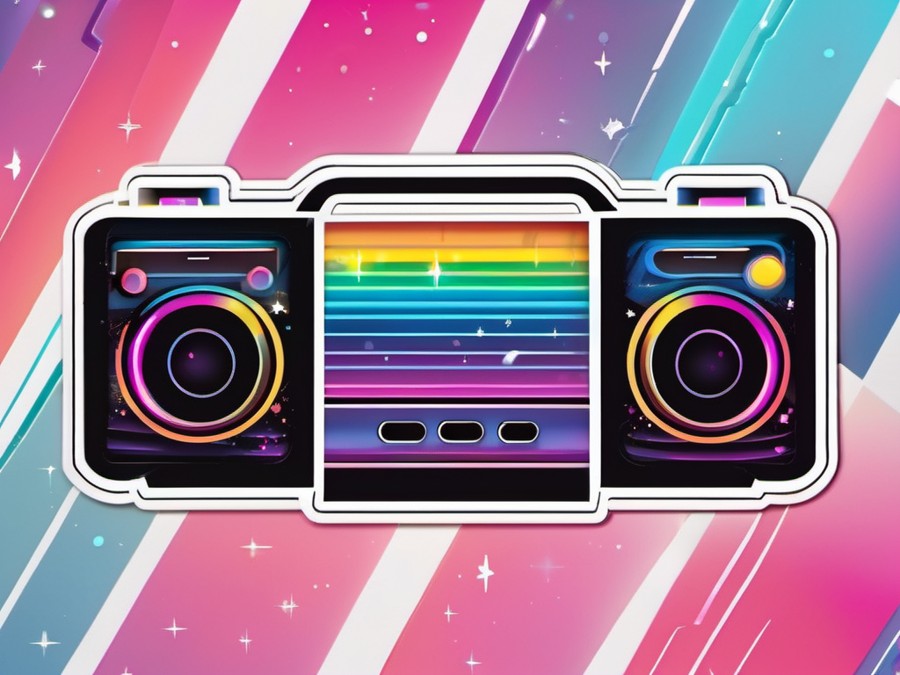· Charlotte Will · Personal Radios · 7 min read
What is the difference between AM/FM and digital personal radios?
Discover the key differences between AM/FM and digital personal radios. Learn about their working principles, benefits, and real-world applications to make an informed decision on which radio type best suits your needs.

Welcome to our comprehensive guide on understanding the differences between AM/FM and digital personal radios. If you’re wondering which type of radio to choose, you’ve come to the right place. Let’s dive into each type and compare their features so you can make an informed decision.
Understanding Analog Radios (AM/FM)
Analog radios have been around for decades and are still widely used today. Let’s explore how they work and their benefits.
How do AM and FM radios work?
AM (Amplitude Modulation) and FM (Frequency Modulation) are two different methods of transmitting audio signals.
- FM: Known for its clear and crisp sound, FM works by varying the frequency of the radio wave to match the audio signal.
- AM: This method varies the amplitude (strength) of the radio wave in response to the audio signal. While AM can cover a wide area, it is more susceptible to interference and static.
Benefits of AM/FM radios
- Wide coverage area: Analog signals can travel farther than digital signals, making them ideal for rural areas.
- Use in emergencies: During power outages or natural disasters, analog radios can still function, providing crucial information and communication.
For a deeper dive into the differences between AM and FM shortwave radios, check out our article on What is the difference between AM and FM shortwave radios?.
Introduction to Digital Personal Radios
Digital personal radios are a more modern solution, offering various advantages over their analog counterparts.
What is a digital personal radio?
A digital personal radio uses DAB (Digital Audio Broadcasting) technology to transmit audio digitally. This means the signal is converted into a binary code for transmission and then decoded back into an audio signal at the receiver.
How do digital personal radios work?
Digital signals are transmitted in packets, similar to how data is sent over the internet. This method offers improved sound quality and better resistance to interference.
Benefits of Digital Personal Radios
Digital personal radios offer several advantages that make them a popular choice.
Improved sound quality
One of the most noticeable benefits of digital personal radios is the superior sound quality compared to AM/FM radios. The digital transmission eliminates background noise and static, resulting in clearer audio.
Better reception and range
Digital signals can overcome physical obstacles more effectively than analog signals, providing better indoor reception and a wider range.
AM/FM vs Digital Radio Comparison
Let’s break down the key differences between analog and digital personal radios.
Broadcast Quality
Digital transmission offers better broadcast quality due to the absence of noise and distortion. Analog transmission, on the other hand, is more susceptible to interference. For a similar comparison in different technology, you might enjoy our article on What is the difference between Bluetooth and FM transmitters?.
Ease of Use
Tuning an analog radio can be a hassle, while digital radios allow you to select stations with ease. Plus, digital radios often display additional information like song titles and artist names.
Emergency Preparedness
While digital radios offer improved sound quality and features, analog radios are still essential for emergency communication. In a power outage or natural disaster, digital infrastructure might fail, making analog radios the more reliable option.
For a similar comparison in communication devices, you might find our article on What is the Difference Between FRS and GMRS Two-Way Radios? insightful.
When to Choose AM/FM Radios
There are several scenarios where an analog radio might be the better choice.
Wide coverage area needs
If you live in a rural area with poor digital signal coverage, an analog radio might be more suitable due to its wider broadcast range.
Emergency use cases
During emergencies, analog radios are often the more reliable choice. They can function without a power source and are less likely to be affected by infrastructure failure.
When to Choose Digital Personal Radios
Digital personal radios excel in various modern applications.
Sound clarity requirements
If you prioritize sound quality for listening to music or talk shows, a digital personal radio is the way to go.
Modern features
Digital radios often come with additional features like smartphone integration, Bluetooth connectivity, and the ability to store preset stations.
Real-World Applications of Digital Personal Radios
Let’s explore some common use cases for digital personal radios.
Automotive use
Many cars come equipped with DAB radios, allowing you to enjoy crystal-clear audio on the go.
Home entertainment
Digital radios can complement your smart speakers and TVs, providing additional entertainment options. For a similar comparison in home entertainment devices, you might find our article on What is the difference between LED and LCD TVs? interesting.
Emergency Preparedness with Personal Radios
In any emergency situation, having a reliable means of communication is crucial.
Importance of emergency communication
Personal radios can provide lifesaving information during natural disasters or power outages.
Including personal radios in your emergency kit
Your emergency kit should include a reliable radio, along with extra batteries, a flashlight, and essential documents. For more tips on emergency preparedness, check out our article on What is the Difference Between a UPS and an Inverter?.
Future of Personal Radios: Trends and Innovations
The world of personal radios is constantly evolving.
Integration with IoT devices
Future radios may integrate seamlessly with smart home devices, offering more features and convenience.
Advancements in sound technology
New developments in audio compression and transmission could further enhance the listening experience. For more on digital technology advancements, you might enjoy our article on What is a Digital Microscope and its Benefits?.
Cost Considerations: AM/FM vs Digital Personal Radios
When choosing a radio, cost is an important factor to consider.
Initial investment
Digital personal radios tend to be more expensive than their analog counterparts. However, the improved features and sound quality might justify the higher cost for some users.
Long-term value
While analog radios may require more maintenance (like battery replacements), digital radios might need software updates to keep up with technological advancements.
Maintenance Tips for Personal Radios
To ensure your radio lasts as long as possible, proper maintenance is essential.
Caring for analog radios
Regularly tune your analog radio to keep it in top condition. Also, consider using rechargeable batteries to save money and reduce waste.
Maintaining digital personal radios
Keep your radio’s antenna clean and ensure it’s properly positioned to receive the best signal. Additionally, check for software updates to keep your radio running smoothly.
Conclusion
In conclusion, the choice between AM/FM and digital personal radios depends on your specific needs and preferences. Analog radios offer wide coverage and reliability during emergencies, while digital radios provide superior sound quality and modern features.
Frequently Asked Questions (FAQs)
Here are some common questions about personal radios.
Can I use my digital radio in another country?
Yes, but you may need to rescan for available stations. Check the radio’s manual for specific instructions.
What happens if I lose signal on a digital personal radio?
If you lose signal, the radio will usually indicate this with an error message or icon. Moving to a different location or adjusting the antenna can help improve reception.
Are there any health concerns with using personal radios?
Personal radios operate at a safe distance from your body and emit low levels of non-ionizing radiation. However, prolonged exposure to any electronic device should be avoided.
Can I listen to digital radio on my phone?
Yes, many smartphones support DAB+ reception. You can download a DAB+ radio app to listen on your phone.
What is the best brand for personal radios?
The “best” brand depends on your specific needs and budget. Popular brands include Roberts, Pure, and Sangean for analog radios, and Pure, Sonos, or Tivoli Audio for digital options.
By understanding the differences and specific use cases for each type of radio, you can make a more informed decision on which one best fits your needs. Whether you prioritize wide coverage, sound quality, or modern features, there’s a personal radio out there for you.




